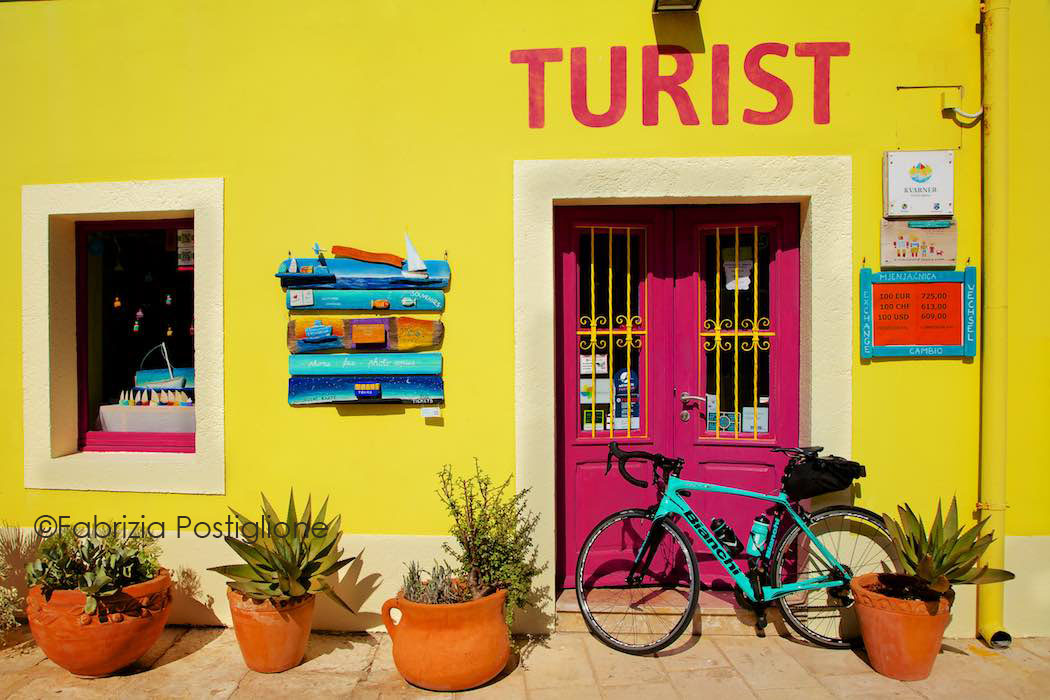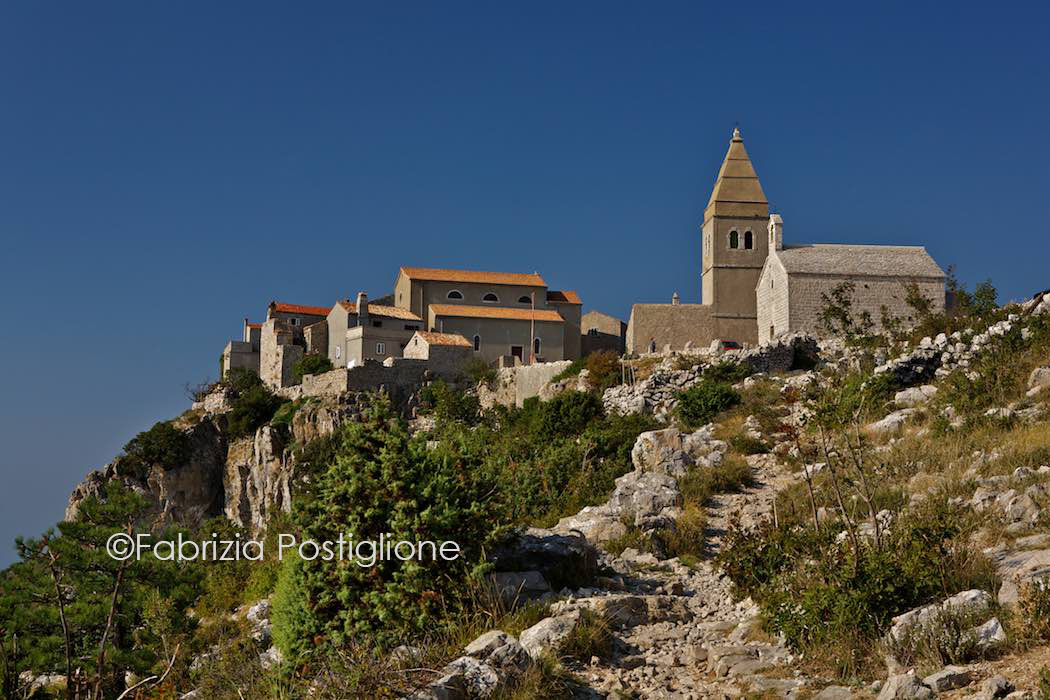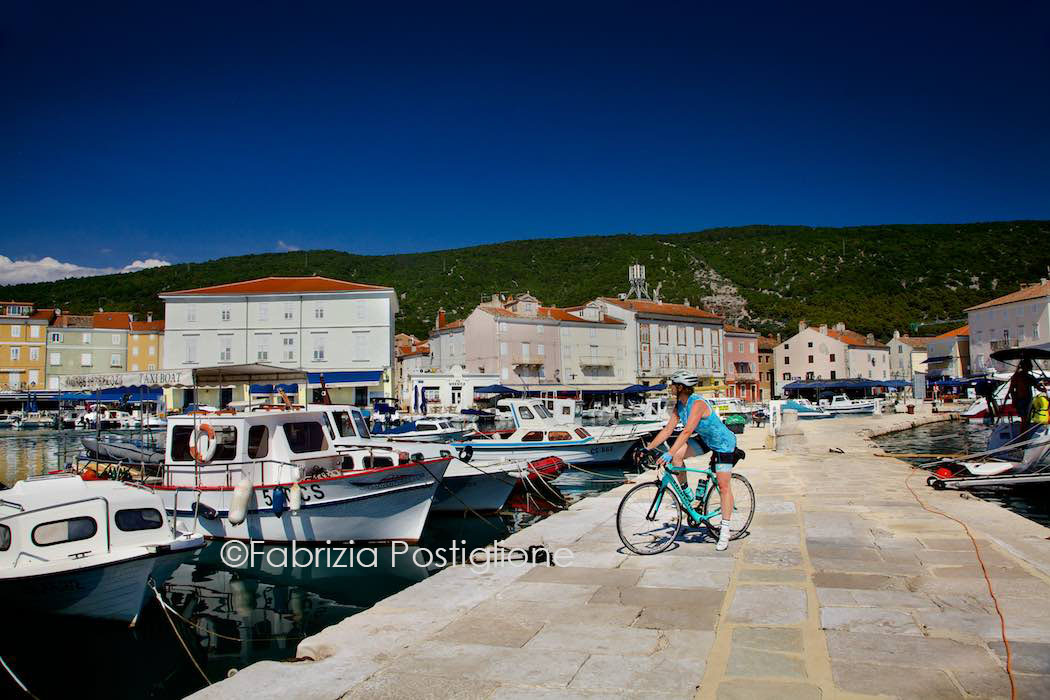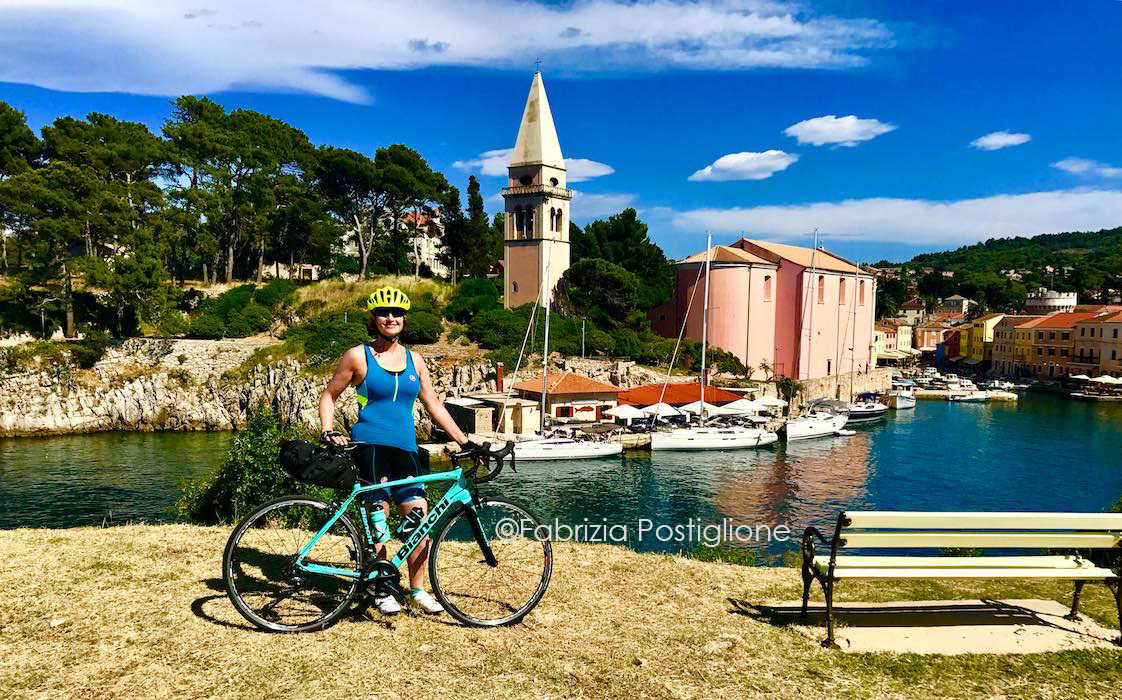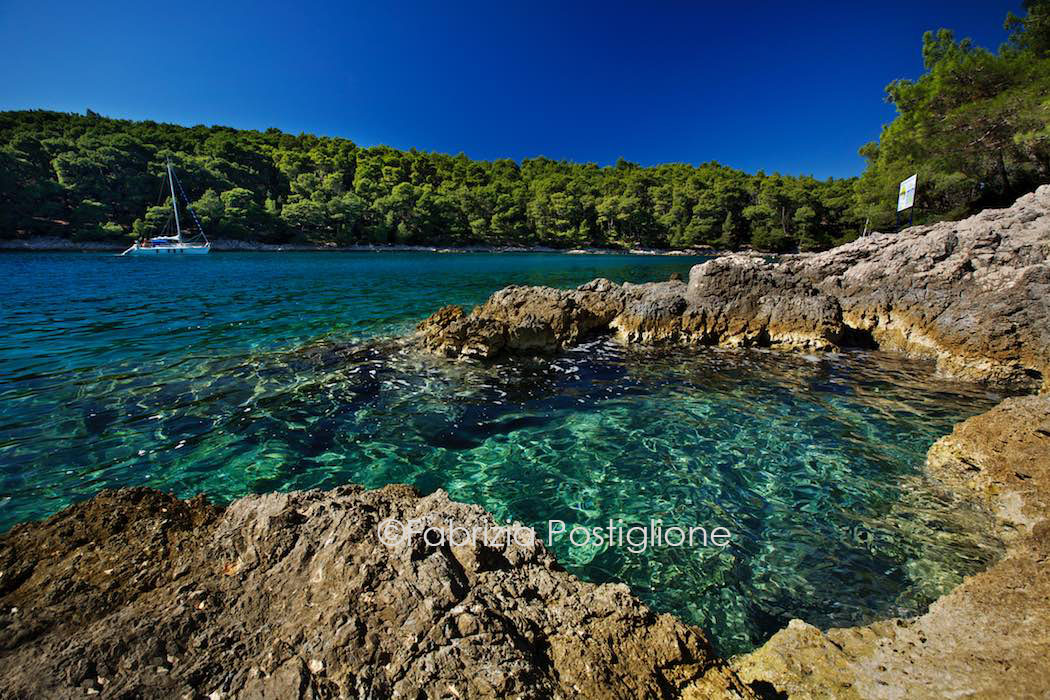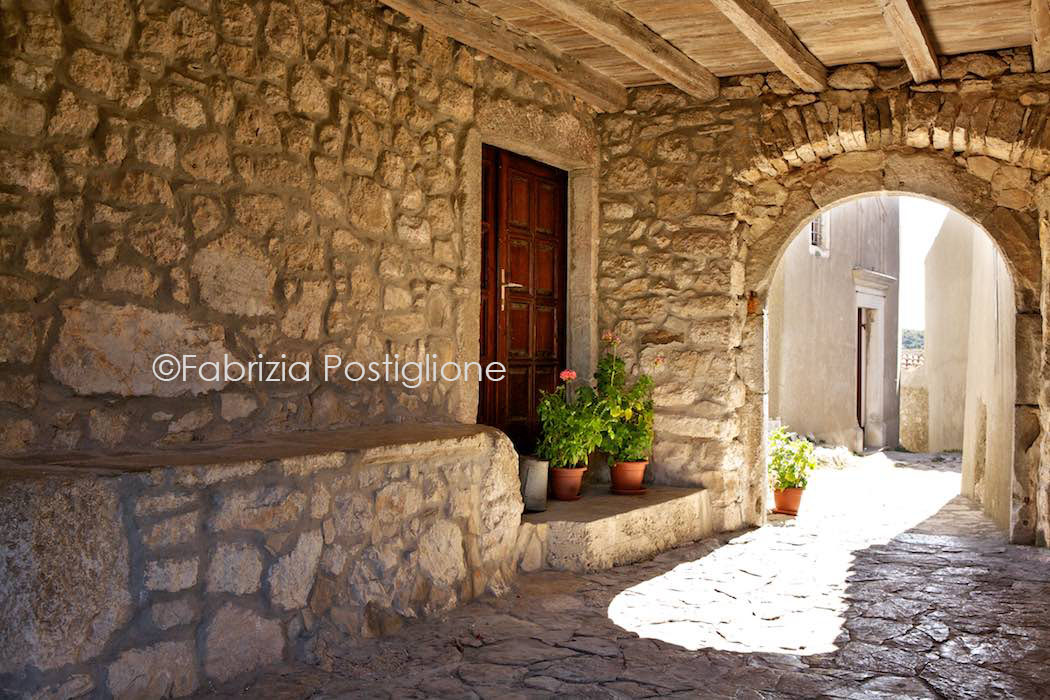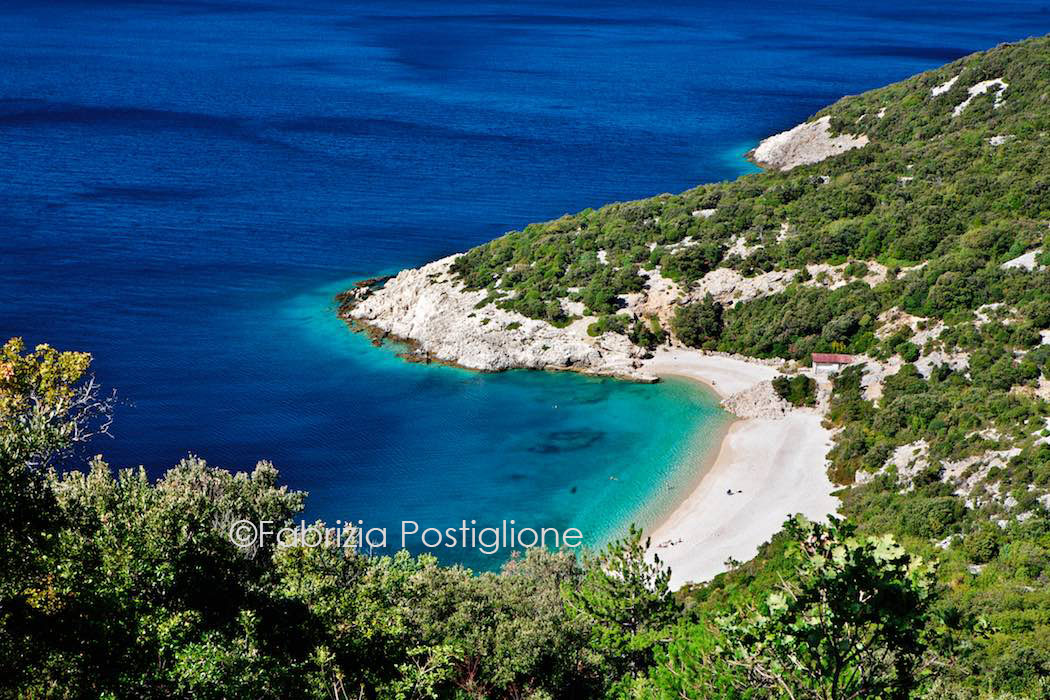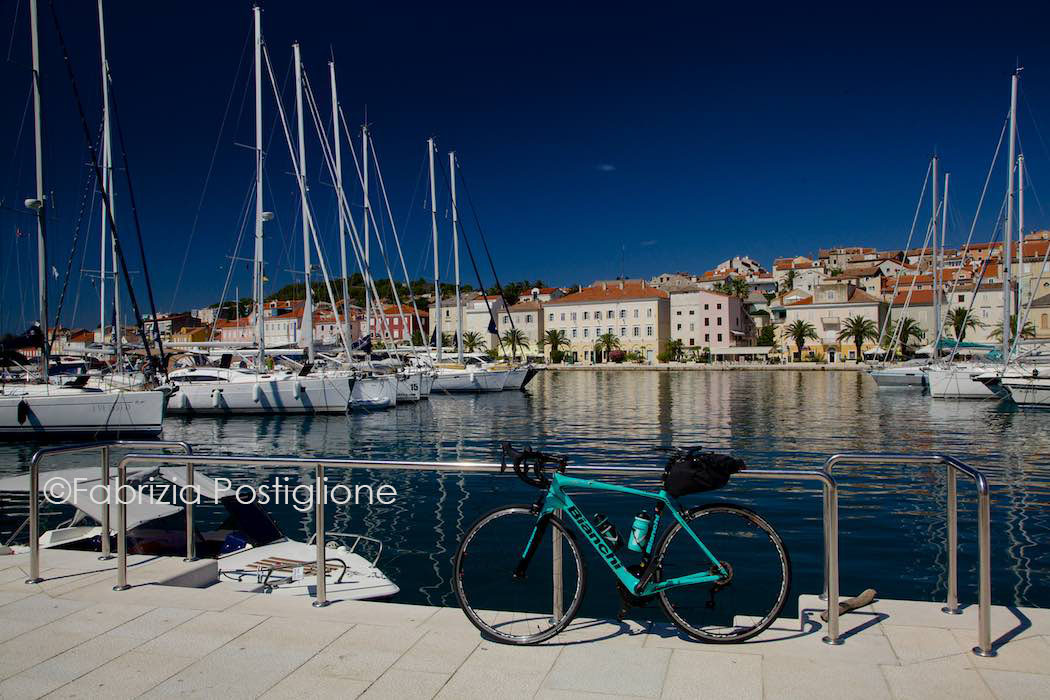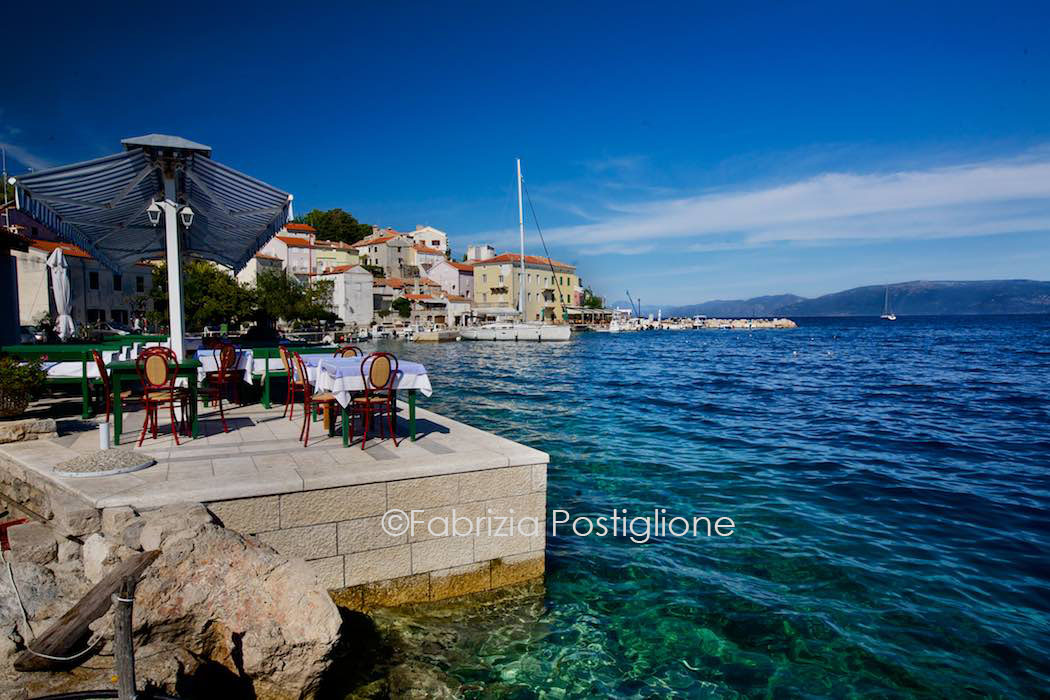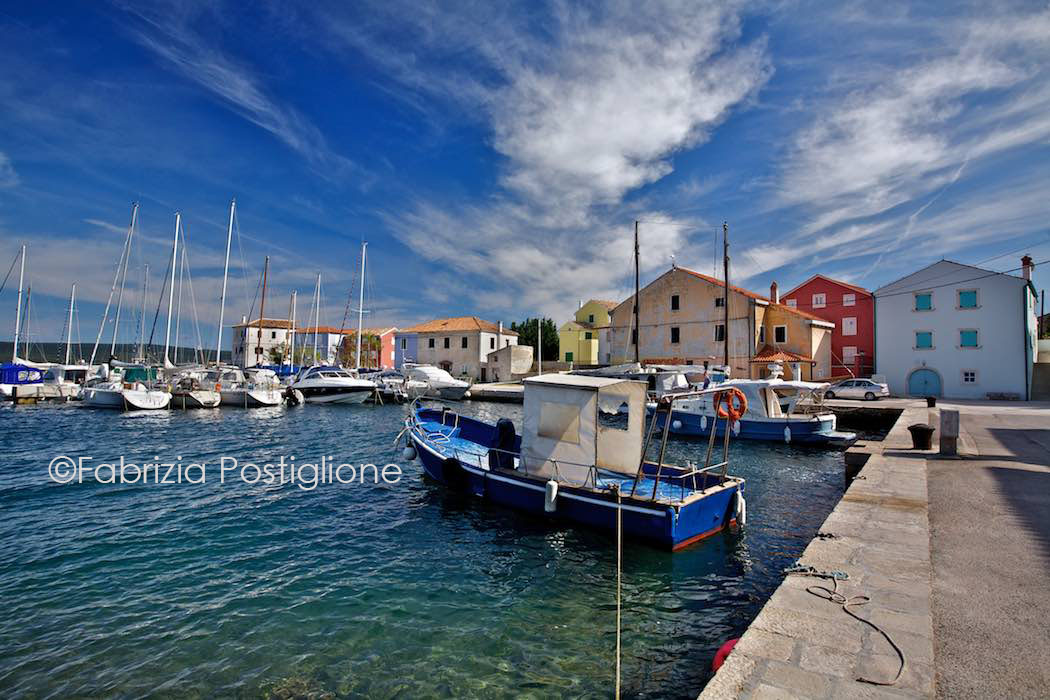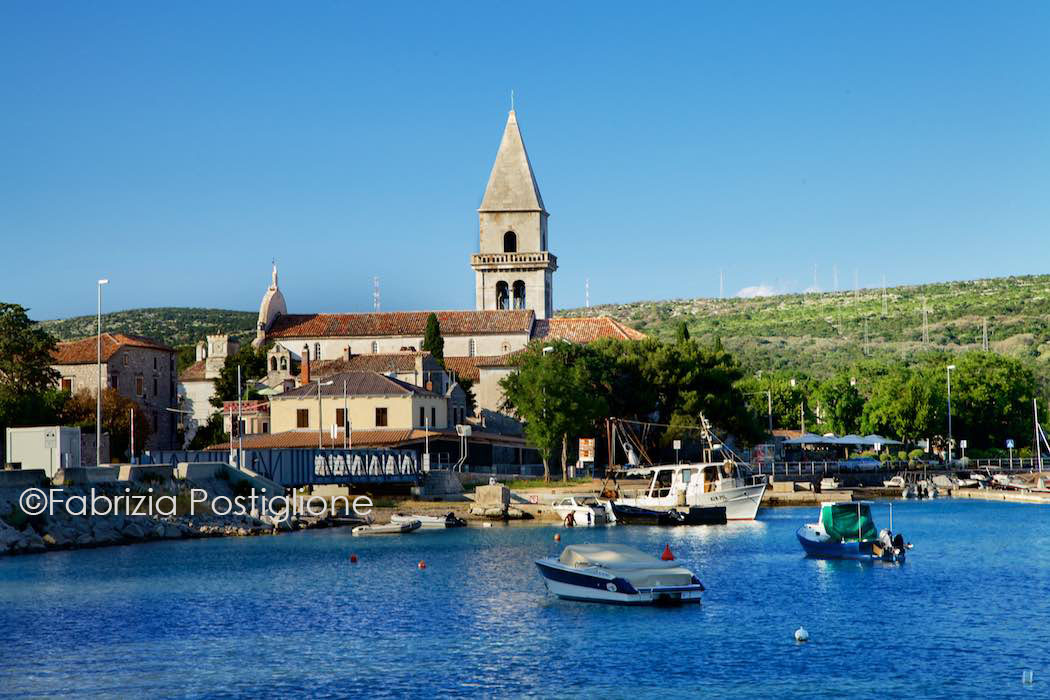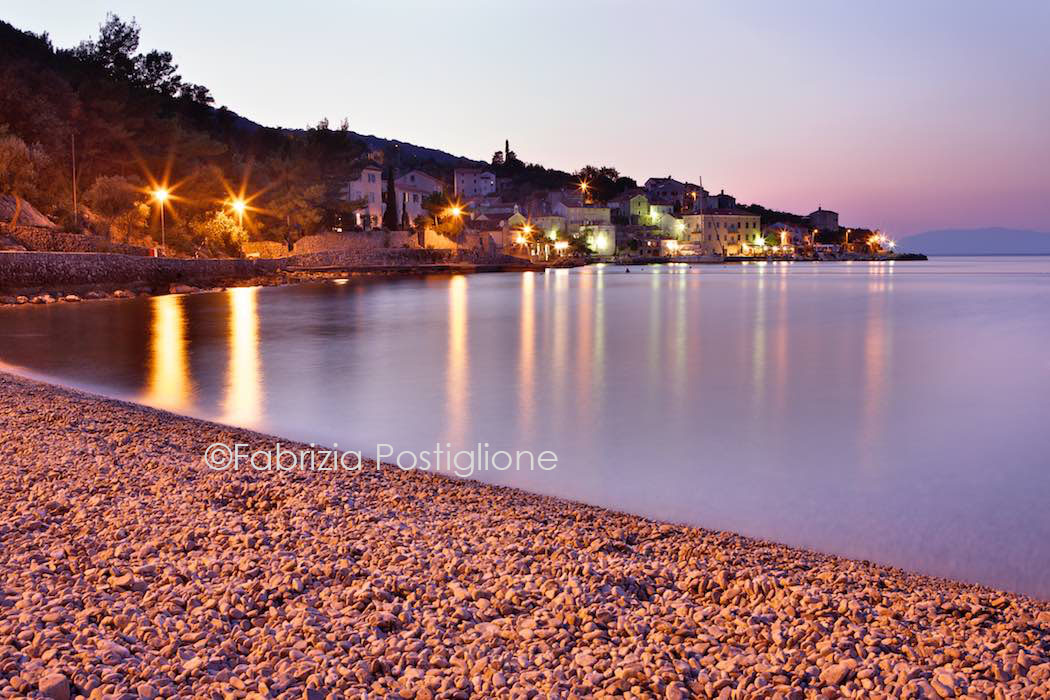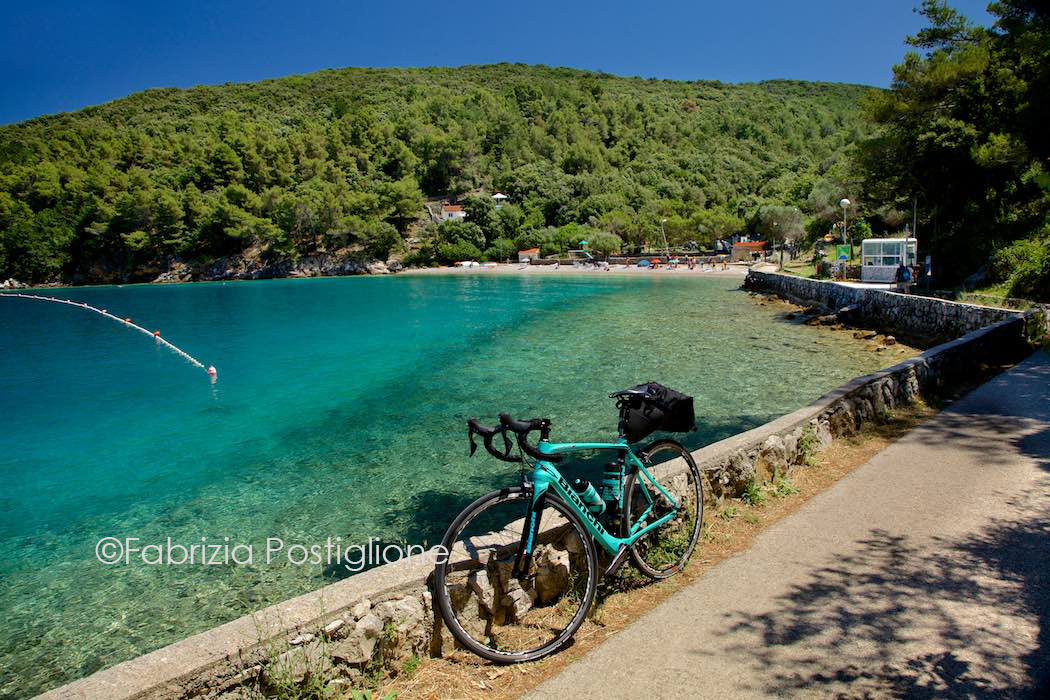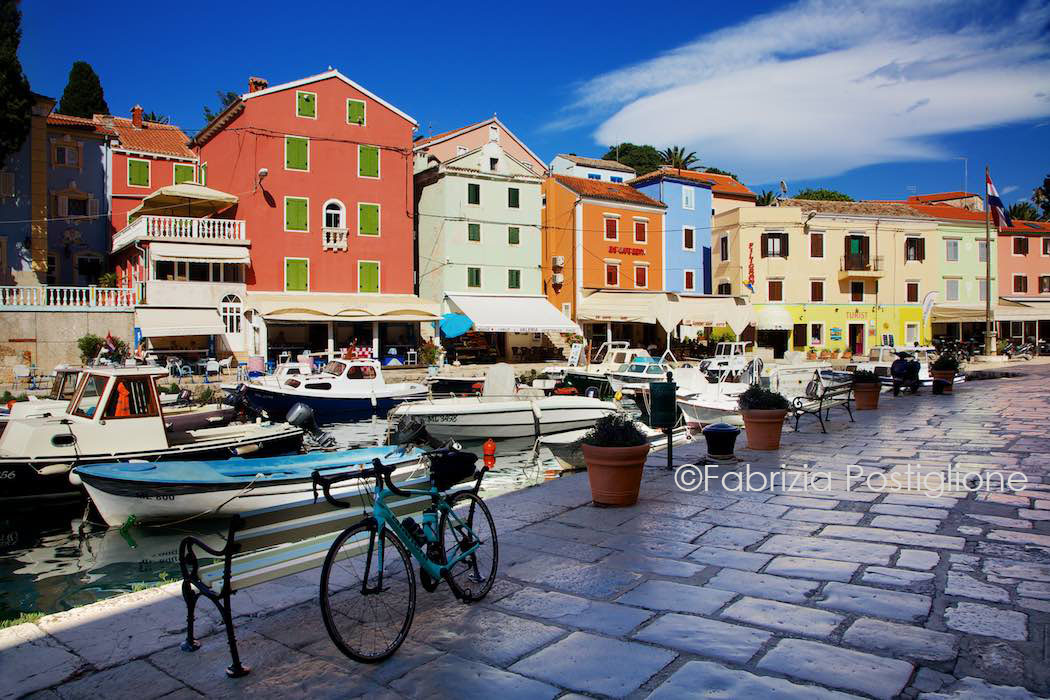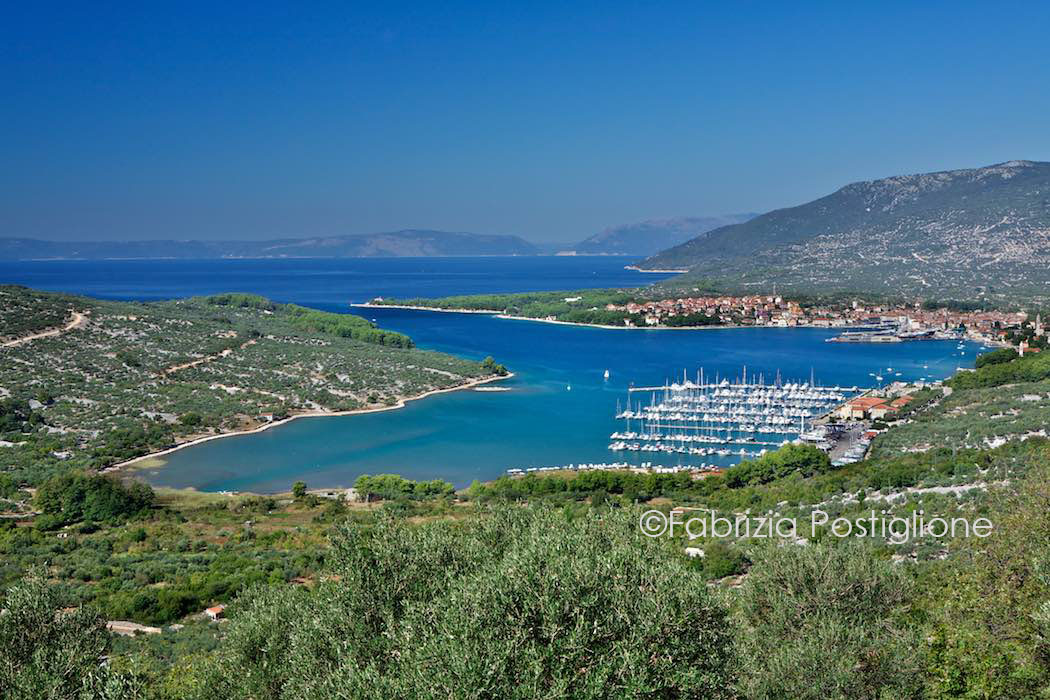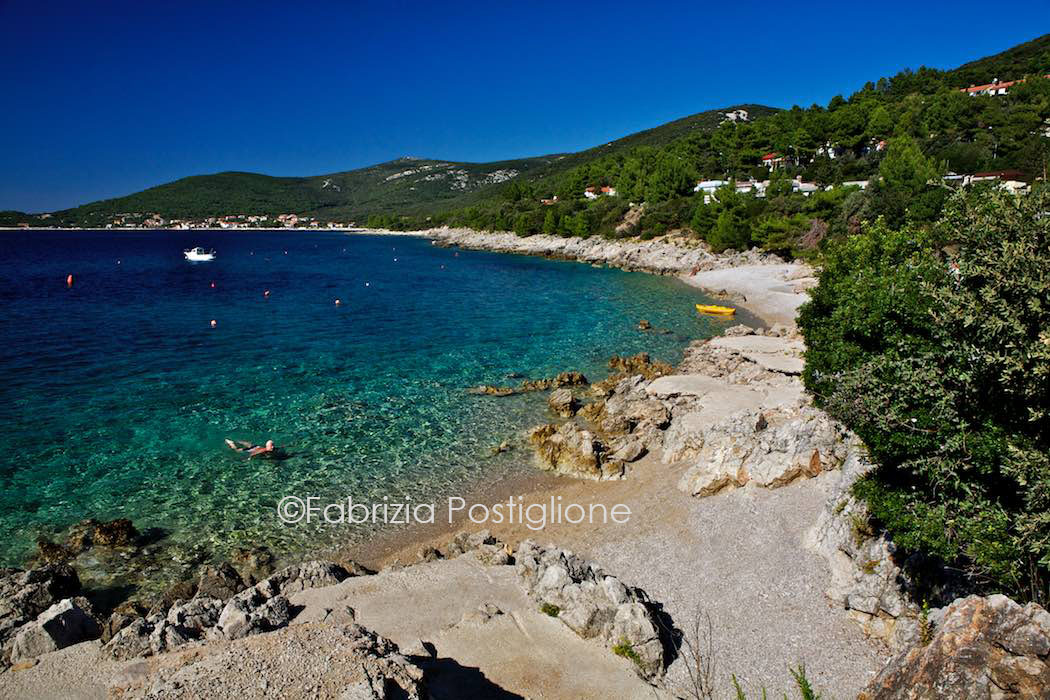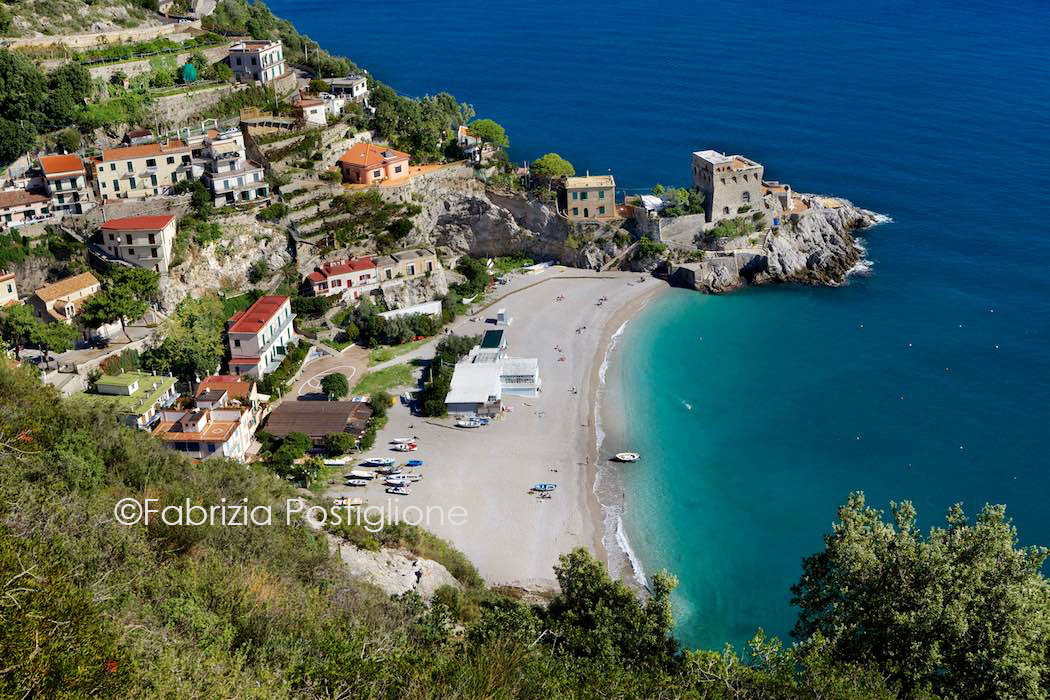CYCLING IN THE GULF OF KVARNER – DISCOVER THE ISLANDS OF CRES AND LOŠINJ
IN SHORT
Stages: 3
Total distance: 145.9 km
Total elevation gain: 2626 m
Traveling time: about 12-14 hours depending on your fitness level.
Difficulty: medium, except the last stage, in Lošinj, which is quite easy.
GPS file of the entire itinerary: https://ridewithgps.com/routes/32692692
Below, at the end of the main article, you can see more details on the itinerary (with the GPS files “stage by stage”), the right bike and clothing, as well as advice on where to eat and sleep, what to visit, tourist offices, etc.
Beautiful, and surrounded by an emerald sea, the islands of Cres and Lošinj are however “different twins”. Nestled in the Kvarner Gulf, and divided only by the 11-meter-long Osor canal, they reveal opposite characteristics. One is superb and austere. The other, sweet and lively, was the buen retiro of the Habsburg nobility.
Cres has a wild charm: sparsely populated, it is covered with dense virgin forest. The Cres mountain range has rough beauty and amazing beaches. Micro hill villages, olive groves, dry stone walls, dizzying cliffs and inaccessible bays draw the “postcard” of a rural island that, until recently, survived thanks to the breeding of sheep. Lošinj has instead gentle reliefs, a more indented coast and also offers a sparkling nightlife. The flora is varied and includes more than 1100 species of plants, 230 types of medicinal herbs and other “exotic” specimens, brought to the island by sailors, such as bananas, lemons, cedars and eucalyptus. Known for its dolphin population, it hosts the first marine reserve for these cetaceans ever created in the Mediterranean.
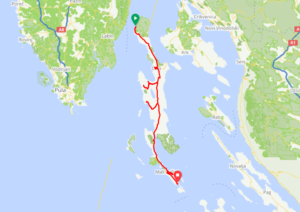
CROAZIA BY BIKE – CRES & LOSJNI ISLANDS BIKE TOUR MAP
DAY 1
We start from Porozina, the small port where you disembark with the ferry arriving from Brestova, in Istria, on the mainland. The historic center, which houses a Gothic church, is perched on a hill and a new tourist district has also been built in the last twenty years. We leave the bay and begin pedaling uphill. Up to the city of Cres, the scenery is truly wild: the road wedges itself in the Mediterranean scrub and in the woods of ancient holm oaks, chestnuts and hornbeams, inhabited by hares, wild rabbits, martens. We follow the backbone of the long northern peninsula, renamed Tramuntana for the wind that comes from the north, and we climb the mountain to reach almost 450 meters above sea level after passing the Dragožetići area. Then finally we can catch a breath and start to gradually go down to the sea level, where the city of Cres, the capital of the island, is surrounded by olive groves thanks to which an excellent extra virgin olive oil is produced.
We reach the colorful Venetian houses overlooking the marina crammed with colorful boats. Cres Town is delightful. In the historical center we get lost in the typical medieval labyrinth of alleys where the gables of the doors bear the coats of arms of the trades: fishermen, farmers, farriers. In the square there is the Municipal Loggia, where the edicts were read. Today honey, vegetables and fruit are sold there in a very lively atmosphere.
Before continuing on our journey south, we cycle towards the beautiful beach of Kovacine on the waterfront cycle path to go for a nice swim. After leaving Cres, we head towards the Gulf of Valun and continue towards Lubenice, a medieval jewel perched at 378 m above a crescent of white pebbles, bathed by a crystal clear sea. The “star” beach of the archipelago is accessible only by sea or on foot, but in the peak summer months it is served by water taxis departing from Valun. It is really worth locking up the bike and hiking down for an hour to reach it: you will not regret it. We’ve been there several times in late September of two different years and we were alone to enjoy this paradise. Leaving Lubenice, we cycle to the turning for Valun, which materializes like a watercolor at the end of a steep descent: the houses with red roofs are bathed by an emerald sea, which massages the surrounding beaches. No visitor cars are allowed: they have to be parked uphill. Seafront konobas(taverns), a campsite and a few rooms for rent make up the tourist offer of Valun, which fascinates us for its postcard perfection and tranquility. We settle in the B&B Palac before choosing our place on the beach where to toast in the sun and go for a well deserved refreshing swim in calm and inviting waters.
To go back to the main road, the next day we will have to face a very steep tear, but it will be worth it, believe me!
DAY 2
The second stage takes us back to the D100, and from here we take the crossroads for Martinšćica, on the west coast. After another bathing break on beautiful Miholašćica beach, we head for Osor. We spot Ustrine, a protected inlet much loved by sailors, and we go down to the final destination: Osor, a village-museum that was a thriving port on the Kavuada canal. The city is surrounded by mighty walls and was flourishing until the fifteenth century, when it was plagued by pestilence. It is a treasure trove of churches (including the Renaissance-Baroque one of the Assumption) and modern sculptures. To recover the energy spent on the ride, we sit at the Konoba Bonifacic, surrounded by trees and flowers near the sea. This tavern offers simple but genuine dishes, such as gnocchi with scampi and asparagus and the delicious homemade hot focaccia. Osor offers very few accommodation facilities, so we choose the comfortable mobile homes of Camping Bijar, hidden in the dense pine forest that slopes towards the sea. There is no beach, but many private piers from which we can dive into a wonderful turquoise water.
DAY 3
Today is finally the time to discover the island of Lošinj. From Osor we cross the canal, dug by the Romans to open a profitable commercial route (the bridge is opened at 9 and 17 to let the boats pass) and in front of us the world changes: gentler slopes, less nervous road, a different vibe. We turn towards the cozy Nerezine village, which rises at the foot of Osorscica mountain (588 m above sea level) and overlooks the east coast of Lošinj, towards the islands of Krk and Rab in the Kvarner Gulf.
Although it is small and less known than the villages of Mali Lošinj and Veli Lošinj, further south, it offers two campsites, a few restaurants and two small hotels, as well as a marina protected from almost all winds, except for the bora that causes strong waves, making it unsafe for larger boats. Anyway, if you’re looking for something suitable for families, head for Bucanje and Galboka beaches that offer shallow waters.
From Nerezine we continue towards Sveti Jacov. Back on the main road, the route is always panoramic, proceeding undulating on the eastern side of the island, offering suggestive views of the “tail” south of Cres and the profiles of the islands of Rab and Pag.
Until we take the detour to Mali Lošinj, the main town on the island, which occupies a majestic fjord in the Augustus Valley, sheltered from the bora winds. We are struck by the elegant mansions of the captains of the vessel, vestiges of the prosperity of the nineteenth century due to the shipyards, and by its vitality, which comes as an electrifying breeze after the lonely and wild island of Cres. With its bars, restaurants and night clubs, Mali Lošinj is in fact the heart of the archipelago’s movida. Then, going down into the pine forest on the eastern side, we see Veli Lošinj, a “mignon” Portofino, with houses painted in bright yellows, reds and blues, and the port dominated by the baroque church of Sant’Antonio, painted in candy pink.
Also in Veli Lošinj, dating back to the 13th century, the rich villas of sailors emerge from the hill, surrounded by exotic gardens. The tourist tradition here is ancient: in 1866 the archduke Carlo Stefano built the castle and in 1892 the city became a climatic health resort. We stop at Gostionica Marina, a good fish restaurant with tables on the seafront, and we eat the delicious fried squid and grilled fish accompanied by chard with potatoes, the typical local side dish. The cycle tour is about to end, unfortunately, but we still have to ride the last stretch of road before reaching the southern end of the island.
It is a few kilometers of ups and downs that separate us from Mrtvaška, finis terrae of Lošinj. From here begins a lace of beaches, rocky coves and cliffs for nudists, accessible only by a dirt path in the pine forest (or by sea). The ideal place to reward us with a nice dip.
USEFUL TIPS
The right bike
In Cres and Lošinj the route is on asphalt, therefore a racing bike or a touring bike is fine. A mountain bike is only useful if you plan to raid the trails, too. In Cres there are many climbs (some steep) and an e-bike is a must for the less trained. As for Lošini: if, after the road route, you want to reach some of the neighboring coves from Mrtvaška, a MTB or gravel bike would be needed. Although those beaches can be reached on foot, too.
Good to Know
Croatian motorists are unruly and tend to drive too fast. In order not to go unnoticed, install intermittent front and rear lights, also visible during the day. The reason why Cres and Lošinj are among the best places for road cycling in the Kvarner Gulf is that – in addition to the beautiful landscapes, the possibility of refreshing stops in clear waters and pleasant visits to the villages – the traffic is more limited than on the mainland. In Cres it can happen to travel many kilometers without seeing bars or supermarkets: always bring two water bottles, because the heat causes dehydration, and always have some energy bars or isotonic gels with you. It is also useful to carry a swimsuit and a pareo/towel, to be able to take a dip in the many beaches that you’ll encounter along the way. Swimming shoes are also essential because all the beaches are pebbles or stones. They are on sale everywhere.
THE ITINERARY STAGE BY STAGE
DAY 1 – CRES ISLAND
Itinerary: Porozina – Cres Town – Lubenice – Valun
Length: 55.8 km
Traveling time (without stops): 5-6 hours
Elevation gain: 1250 m
Elevation loss: 1263
Difficulty: medium
GPS file: https://ridewithgps.com/routes/32691173
We start from Porozina and immediately begin to climb along the D 100, fortunately with not too hard slopes (4-5% gradient with peaks of 8%) up to 450 m above the sea level. You go down again to 355 m and then you start gaining altitude again up to 414 m. Then there are no longer too significant climbs and the road goes down to sea level in Cres town. You exit the center of the city of Cres and take the D100, going up constantly (except for a few “ups and downs”) for more than 10 km up to about 283 m. above sea level, peak that is reached before the crossroads for Valun. Continue with various “ups and downs” and then gradually climb up to an altitude of 391 m. just before Lubenice. The route offers spectacular panoramas and some curves with double-digit slopes (13%). Arriving in the picturesque medieval village of Lubenice, if you want to reach the splendid beach of the same name, you can lock up your bike and continue on foot on the hiking trail (1 hour to descend, 1 and a half hour to ascend). Once back up, you ride a stretch of the route backwards and then turn left to Valun. The most demanding part arrives in the last 200 meters that separate the parking for visitors from the marina: it is a descent with slopes that reach a 20% gradient, even if for a few meters. Be careful!
DAY 2 – CRES ISLAND
Itineray: Valun, Miholašćica, Martinšćica, Osor.
Length: 49.1 km
Traveling time: 4 hours
Elevation gain: 776 m
Elevation loss: 779 m
Difficulty: medium
GPS File: https://ridewithgps.com/routes/32691801
If you are not super trained, or you do not have an e-bike, to go up from the Valun promenade to the visitor parking (after which the slopes become easier), you will have to push the bike for about 200 meters (in this stretch there is a very steep ramp). After Valun, you return to the D100 and continue to climb up to an altitude of 351 m after cycling for 10 km from the start. Continue south with a series of ups and downs, then you gradually begin to lose altitude until you reach Hrasta, and also beyond the turning to Martinšćica, along the road that leads to the west coast. Finally, to reach Osor you return to the D 100 and, with a series of ups and downs (this time with easier gradients), you arrive at the medieval village located just before the bridge that connects Cres to Lošinj.
DAY 3 – LOŠINJ ISLAND
Itinerary: Osor – Nerezine – Sveti Jacov – Mali Lošinj – Veli Lošinj – Mrtvaška.
Length: 41km
Traveling time: 3 hours
Elevation Gain: 590 m
Elevation Loss: 584 m
Difficulty: quite easy
GPS file: https://ridewithgps.com/routes/32692396
Little altitude gains and a gentler orography characterize the island of Lošinj, very popular with two-wheelers. The route begins to rise gradually with some “ups and downs” south of Osor and, after 12 km, just before Mali Osir, you reach 105 m above sea level. Then it begins to descend and, 16 km from the start, it almost reaches sea level. After Poljana Camping, a short cycle path begins on the stretch of promenade that runs alongside the eastern “arm” of the deep bay of Mali Lošinj. After visiting the village, you return to the D100 to continue towards Veli Lošinj. From here, go back to the crossroads retracing the same panoramic road and head to the south end of the island on the only paved road that leads to Uvala Mrtvaška. The highest altitude of the route, 227 m, is reached 4 km from the arrival.
WHERE TO STAY
VALUN
Palac B&B
The house, located in the harbor, has cozy rooms with sea view. Good breakfast with local products. Beaches are within walking distance. Reservations through booking.com.
OSOR
Camping Bijar
As previously mentioned, Osor offers very few accommodation facilities. The ideal are the mobile homes of Camping Bijar, hidden in the dense pine forest that slopes towards the sea. Each cottage sleeps up to 6 people and has two bedrooms, living room, kitchen, bathroom, equipped veranda and parking space. The campsite is in a quiet area and is a few hundred meters from the historic center of Osor; it also offers mini markets and private piers from which to dive into a wonderful turquoise water. Osor, Osor bb, tel. 00 385 51 237 147; camp-bijar.com.
VELI LOŠINJ
Residence La Dolce Vita
Beautiful studios in pastel shades (called Belle Epoque, Casablanca and Il Postino) with lace curtains, wooden furniture, mosaic decorations and old-fashioned bathtubs. The property is located near the center of Veli Lošinj and a few hundred meters from the waterfront. In the well renovated building there are also sauna and laundry. Free bicycle rental. Veli Lošinj, Obala Maršala Tita 35, tel. 00385 98 443 150; la-dolce-vita-apartments-1.business.site.
WHERE TO EAT
OSOR
Konoba Bonifacic
Nestled among trees and flowers near the sea, this tavern offers simple but genuine dishes, such as gnocchi with scampi and asparagus, home-made hot focaccia, grilled squid, stewed lamb. Cres Island, Osor, Osor 64, tel. 00 385 51 237 413. Average bill: 22 €.
Na Moru
Atmospheric pieds dans l’eau restaurant in Valun, it has tables overlooking an incredible jade sea and specializes in fish cuisine. Order the grilled tuna steak. Cres Island, Valun, tel. 00 38 051 525-056. Average bill: 28 €.
Konoba Bukaleta
Rustic tavern in a small village near Cres Town, specializing in robust meat dishes, such as breaded lamb, grilled or roasted on a spit, gnocchi with lamb sauce. Cres Island, Loznati, Loznati 9, tel. 00385 51 571 606. Average bill: € 27.
VELI LOŠINJ
Bora Bar Konoba
Excellent restaurant and truffle shop in the hamlet of Rovenska, a few minutes walk from the center of Veli Lošinj. Mediterranean cuisine (especially fish), with strong Italian influences. Try the risotto with mushroom and truffles, the homemade sage tortelloni with ricotta and spinach, the fish filet with julienne courgettes and truffles, or the duck breast in orange sauce. Lošinj Island, Veli Lošinj, Ulica Rovenska 3, tel. 00 385 51 867 544; borabar.net. Average bill: 45 €.
Gostionica Marina
Nice tavern with tables on the marina. Excellent fried calamari, grilled fish, chard with potatoes (typical local side dish). Lošinj Island, Veli Lošinj, Obala Maršala Tita 38, Tel. 00 385 51 236 178. Average bill: 28 €.
WHAT TO SEE
Veli Lošinj is the headquarters of the Blue World Institute of Marine Research & Conservation(www.blue-world.org) whose mission is to protect the marine habitat of the Adriatic through training, conservation and a research that focuses mainly on large marine vertebrates: dolphins and whales, sea turtles, sharks and giant devil rays. The Marine Education Center offers exhibitions and multimedia presentations.
SHOPPING
Ultramarin Art in Veli Lošinj (Obala Marsala Tita 7, ultramarin-art.hr) is the gallery of a couple of artists who exhibit and sells colorful boats, vases and other objects made with recycled wood found on the beaches of the island and then painted by hand.
WEB RESOURCES
tzg-cres.hr


